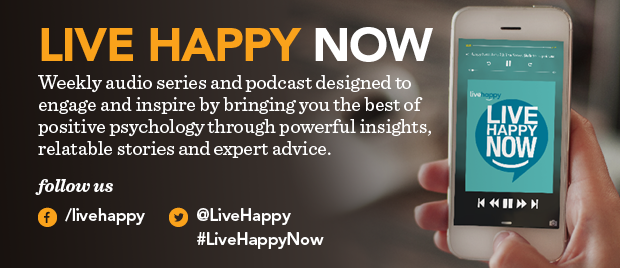3 Expert-Tested Tips for Tackling Anxiety
There’s something deeply reassuring about having a book about coping with anxiety written by an expert who’s actually been there: the racing heart, the nausea, the obsessive thoughts. That’s the case with Alice Boyes, Ph.D., author of The Anxiety Toolkit: Strategies for Fine-Tuning Your Mind and Moving Past Your Stuck Points.
“Since I’m anxiety-prone by nature,” she writes, “almost every major good decision I’ve made in my life has involved feeling physically sick with anxiety. If I weren’t willing to make decisions that lead to temporarily feeling more anxious, my life would be much emptier than it is today.”
If you’re a worry wart by temperament and want to live a full, rich life, you’re going to need to step outside your comfort zone. But instead of rah-rah, “just do it” advice, Alice offers tips that are doable.
She calls these “micro-interventions” to handle the times when you find yourself “over-checking, over-researching, overthinking, or being unwilling to try something that’s important to you because of a chance that something might go wrong.” Alice’s strategies don’t make you feel like you’re leaping off a cliff, more like you’re stepping onto an escalator that’s moving just a tad faster than you’re accustomed to.
Here are three of Alice's top anxiety-reducing tips.
1.Work with your nature rather that fighting against it.
Recognize when you’re berating yourself for feeling anxious, Alice says. For example, you say to yourself, “I should be able to chat with strangers at a party without getting so nervous,” or “I shouldn’t worry so much about what other people think of me.” That kind of “should/shouldn’t” thinking can prolong and intensify your anxiety, Alice says. Instead, treat yourself with compassion and empathy, the way you would a good friend.
For starters, replace the “shoulds” in your self-talk with “prefer.” Rather than saying, “I should be more outgoing in social situations,” try “I would prefer to be more outgoing.” This may seem like a ridiculously simple change, Alice says, but it works. “It can help you disrupt your overthinking just enough to give you a small window of clear mental space. This allows you to start doing something useful rather than keep ruminating.”
Read More:Become more resilient in 9 simple steps.
2.Change your behavior instead of waiting to change your mind.
It’s easier to change your behavior and let your thoughts naturally catch up, Alice says, than it is to make the leap from insight to actions.
Those of us who are anxious often wait to start something new until we’re 100 percent sure it’s going to be successful or absolutely certain that we’ve made the right decision, whether that means choosing the color to paint our walls or posting a profile on a dating website. This kind of hesitancy is a common anxiety trap that keeps us slamming the brakes when we want to tap the accelerator.
Real problem solving, in contrast to avoidance, Alice says, involves “concretely defining what the problem is, generating a short list of your best options for moving forward, picking something, and deciding when and where you’re going to implement that solution.”
Read More: Are you sabotaging your self-esteem? Take our quiz to find out.
3.Don’t try to be someone you’re not.
By nature, some of us are gregarious extroverts, with a wide circle of friends. Others of us are introverts, reserved and less social with a few close relationships. Knowing your personality type, Alice says, can go a long way in helping you manage your anxiety.
She suggests finding the right level of “busy-ness”—enough activities and social engagements to keep you feeling stimulated but not scattered—and maintaining a mix of change and routine in your life. If you’re someone who clings to the familiar, consider alternating vacations to the same old place with someplace you’ve never been before.
Read More: Have you tried the 5-minute misery cure?
Read More









